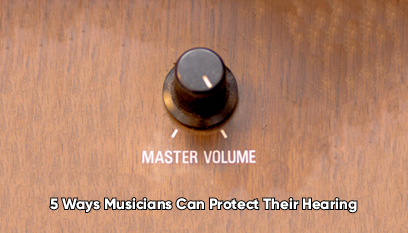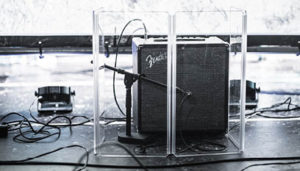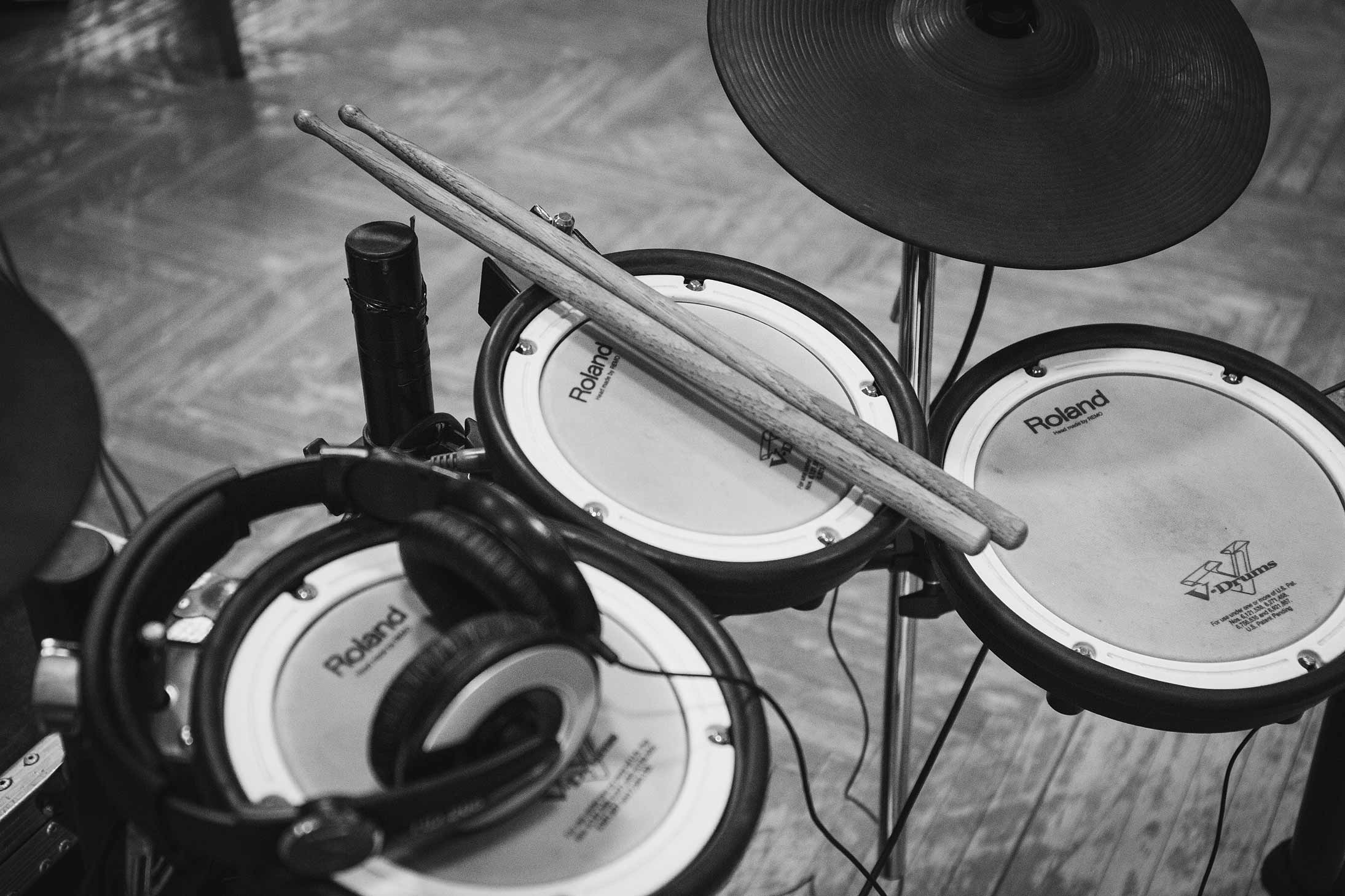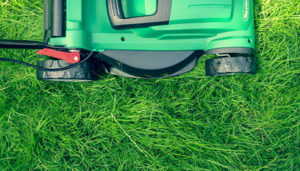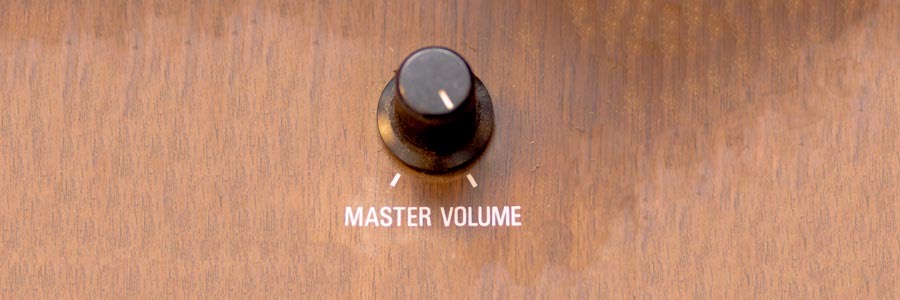
Did you know that being a professional musician increases the chances of hearing loss? It’s true. In 2014, a German study found that professional musicians were four times more likely to report noise-induced hearing loss than others.
Here are just a few examples of famous musicians with significant hearing loss or tinnitus:
- Eric Clapton
- Pete Townshend
- Roger Daltrey
- Phil Collins
- Brian Wilson
- Paul Stanley
- George Martin
- Chris Martin
- Neil Young
- Moby
- Ozzy
- And, obviously, Beethoven.
You probably weren’t surprised to see quite a few classic rockers on this list. Back in the 70s, amplification technology was nowhere near as good as it was today. Bands like the Grateful Dead and the Rolling Stones played in front of enormous arrays!
Nowadays, some of those huge Marshall stacks you see on stage aren’t even turned on, because modern amps require far less wattage. I remember going to see Cheap Trick about ten years ago, and suspected that most of their cabs were just for show. That theory was proven correct when the huge wall of cabs lit up in the middle of the set! They were basically part of the stage effects.
So you’re probably not hanging out in front of 60s-era Marshall stacks on a regular basis, but you should still take care of your ears. What can you do to protect your hearing while playing music or going to concerts? (Disclaimer: I’m not a doctor. The following is meant to be general information, and is not intended as a substitute for medical advice. If you have any questions about your hearing or any other medical issue, consult a professional.)
1) Find a form of hearing protection that fits your ears, needs, and budget — and use it!
The most sophisticated ear protection in the world are useless unless you actually use it. The problem is that there’s no one-size-fits-all solution for ear protection. Some trial-and-error may be involved. For example, many people find earplugs uncomfortable due to the size or shape of their ears. It’s not their fault — people’s ears are far from standard! There’s a lot of variation in the width of the ear canal, for instance. Even if you find earplugs that fit your ears pretty well, you may end up abandoning them because you can’t hear conversation or music clearly with them in.
But earplugs are just one of the options available. Let’s differentiate between the various types of ear/ sound devices: FORMS OF EAR PROTECTION
- Disposable earplugs are the usual cheap foam ones you see everywhere. You roll them into a cylinder, put them in your ears, and wait for them to expand. When you cram a foam earplug into your ear, you are obviously reducing the volume, but you’re also making the nuances of the music pretty much impossible to hear. Cheap foam earplugs reduce the higher frequencies unevenly. That makes music sound bad, and it’s especially unhelpful for people who already have trouble hearing higher frequencies due to hearing loss.
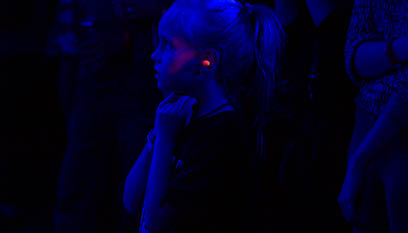 They’re also overkill, because you don’t usually need music to be THAT much quieter for it to be safe. You might want to lower the volume by around 10 decibels, but a foam earplug can reduce it by 30 decibels! They’re super cheap, though! You can get a huge container of these puppies for under $20.A quick cautionary tale about foam earplugs: I once dreamed that I was eating a really rubbery pancake. As I woke up, I realized I was chewing on a used foam earplug! I’d been wearing them to bed to deal with my wife’s allergy-related snoring. I can still remember the taste of that “pancake.” Gross!
They’re also overkill, because you don’t usually need music to be THAT much quieter for it to be safe. You might want to lower the volume by around 10 decibels, but a foam earplug can reduce it by 30 decibels! They’re super cheap, though! You can get a huge container of these puppies for under $20.A quick cautionary tale about foam earplugs: I once dreamed that I was eating a really rubbery pancake. As I woke up, I realized I was chewing on a used foam earplug! I’d been wearing them to bed to deal with my wife’s allergy-related snoring. I can still remember the taste of that “pancake.” Gross!
- Reusable plugs are usually made of silicone or some kind of plastic. The pre-molded ones sometimes come in different sizes so you can find the ones that work for your ears. Examples include DeciBullz, Alpine MusicSafe, HEAROS earplugs, and LiveMus!c Reusable earplugs. You can expect to pay in the range of $10-30 per pair for most of these. They are a definite upgrade from the disposable foam ones.
- Custom-fitted earplugs are significantly more expensive than the foam ones, but they also work significantly better. One such product, Musicians Earplugs by Etymotic, provides flat attenuation, which means that the sound is reduced equally across all frequencies. Music sounds a lot better.And because these high-fidelity earplugs are custom-molded to your ears, they provide a good seal over the ear canal (an important factor in effective hearing protection). Musicians Earplugs are only available from hearing doctors, because they require molds deep inside your ear.
- Ear muffs go over the ears, and look a lot like headphones (we’re not talking about the fluffy winter kind here). They are a popular form of hearing protection for children, so you may have seen little kids wearing them at music festivals. But they are also used in loud industrial settings, such as in factories, on construction sites, and at shooting ranges. They are generally comfortable for people with all different ear shapes and sizes, although they can be pretty heavy and hot in warm weather. It’s critical that ear muffs fit properly to prevent sound from echoing inside the muff. This can sometimes be challenging for people with glasses or big beards.
NOT FORMS OF EAR PROTECTION
- Earbuds, like the white ones that come with Apple products, are held in place by the outer part of the ear, and are usually one-size-fits-all. They are NOT a form of hearing protection, and at high volume can actually contribute to hearing loss. Unfortunately, lots of people who wear earbuds in loud environments, like on the subway, end up cranking the volume to an extreme level to hear their music over the background noise.
- In-ear headphones, or earphones, are a fancier version of earbuds. They usually have some sort of rubber or silicone cushion to make them more comfortable. They can be quite high-end, especially the custom-fit ones.
- On-ear or over-the-ear headphones: Many people find these more comfortable than earbuds because they do not depend on the shape of the ear. Like amps, headphones are available across a vast spectrum of quality and price. No matter how thin or bulky headphones are, they should not be considered a form of hearing protection. Headphones are designed to play music, not protect your ears from sound, and blasting loud music directly at your ears is no safer than listening to the same music at a concert.
- In-ear monitors sit deeper inside the ear, and are used in place of stage monitors. They help musicians hear what they’re playing or singing.The cool thing about in-ear monitors is that they help reduce stage volume. Lower stage volume is a great goal in itself, but it also reduces the risk of feedback and makes life easier for the sound engineer mixing the show.While these seem like something that would only be found at huge concerts, they are becoming popular in smaller settings like churches as well.
2) Be vigilant about your hearing. If you start to notice these signs of hearing loss, get yourself evaluated!
- Struggling to hear conversation in noisy places, such as restaurants
- Struggling to hear higher frequencies, such the “ding” sound when your car door is open
- Needing to increase the volume on your TV (to the point that other people in your house complain it’s too loud)
- Frequently asking people to repeat what they said
- Complaining often that people around you are mumbling
- Ringing in the ears (tinnitis)
What is tinnitis, anyway?
Although tinnitis is described as ringing in one or both ears, some people hear humming, hissing, roaring, or buzzing instead. Almost everyone who has tinnitis has some degree of hearing loss from exposure to loud noises.
If you were just at a loud club show and your ears are ringing, chances are that your tinnitis is only temporary. Hearing loss can be cumulative, though, so you should still be careful!
But if your tinnitis isn’t going away, get evaluated by a professional. All kinds of things can cause tinnitis, from high doses of aspirin to some fairly serious medical conditions. If you’re paranoid like me, this is probably not something you want to look up on WebMD! Just get to the doctor and get evaluated.
3) Be mindful of how loudly you are playing, and reduce your volume when you can.
When you’re playing a show, use amp stands, and in-ear monitors to reduce stage volume. Baffles or other physical barriers can also be helpful if you absolutely must push your amp to high volumes.
When you’re setting up your practice space, consider ways to make it less punishingly loud. Even rugs or carpet remnants make a significant difference! Some people also swear by sound-absorbing moving blankets. You could also consider a drum shield (or an electric drum kit), because everyone else can play quieter when the drums are quieter. It’s always helpful to experiment with ways to play guitar quietly so you know how to sound good when your amp’s not cranked to 11.4) Don’t assume that loud noises that happen to be unpleasant or unusual are more dangerous than other loud noises.
Experts say that hearing loss begins with repeated exposure to sounds over 85 decibels. Rock concerts can range from 100 to 120 decibels, depending on where you’re standing and the act that you’re seeing.
A delicate symphony played at 100 decibels is just as loud as 100 decibels of death metal — or 100 decibels of gunshots. All of these can damage your hearing if you listen to them for long enough without hearing protection. The louder the sound is, the less time it takes to do permanent damage. Guitars are probably not the only loud machines in your life. It’s a good idea to wear hearing protection when you’re using lawn mowers, leaf blowers, chainsaws, motorcycles, snowmobiles, snowblowers, etc. too!
5) Remember that when your hearing is gone, it’s gone for good.
Yes, hearing aids can help… but they don’t actually heal your ears or restore your hearing.It’s vital to do everything you can to protect your hearing now. Even if you have already started to notice hearing loss, you can take steps to prevent it from getting worse.
My Own Experience with Hearing Loss
Over the past few years, I have noticed that my hearing wasn’t so great. It was most noticeable when I was in crowded restaurants with friends. If I was sitting near the speakers for the house music, I’d have a very hard time hearing parts of the conversation that was happening further down the table.
I eventually brought this up to my doctor at a routine physical. I explained that I was disappointed because I have always been (for the most part) good about using hearing protection when I’m around loud music. The doctor asked me about other high-risk hearing practices, such as playing loud music through earbuds (nope), shooting guns without hearing protection (nope), and using tools like lawnmowers and snowblowers without hearing protection.
Right away I knew this had to be it. I spent a lot of my teenage years working as a “facilities kid” for a high-tech company down the street, and that job involved using lawnmowers and snowblowers frequently. I’d never worn hearing protection in those situations.On the way home from that appointment, I went out and got a set of ear muffs from the hardware store and have been using them regularly ever since. I even make a point of wearing them whenever I fire up my circular saw.
Unfortunately I was still noticing a decline, so at my next physical I asked for a referral to an audiologist. After 45 minutes to an hour of simple, but thorough, testing, I was diagnosed with a normal amount of hearing loss for a guy in his late thirties. While this was obviously a relief, it was surprising because I’d been convinced that something was wrong. The doctor remarked that because of all the time I’ve spent with music, I’m probably just more sensitive to the fact that I can’t hear like I used to. So remember, folks: Wear your hearing protection!

